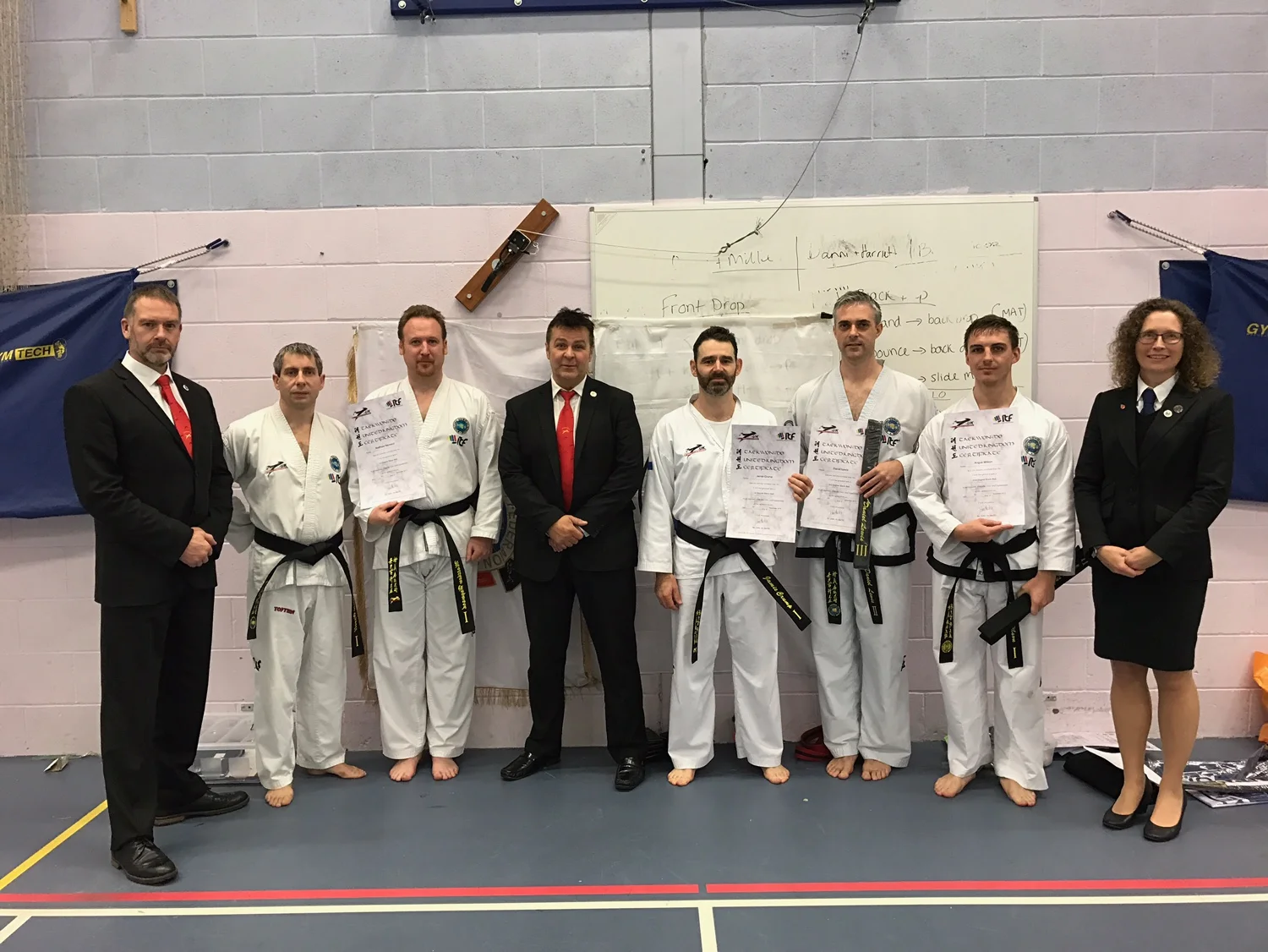Many practitioners of TKD get the technicalities of performing obverse and reverse techniques in stances incorrect, mixed up or don't fully understand the rules around the difference particularly in the earlier years of their training. Here Grand Master Nardizzi fully explains it:
As a collective before a class, gradings, competitions we all chant the oath and tenets of TKD. But the question is do we know what they mean, do we live by them and adhere to them and not only when you see fit to do so but when its right to do so?! The oath and tenets should be what sets us above people that don't train in martial arts, it is about being a better person.
To assist you here are some quotes to help you in this endeavour to understand them and apply them:
I went through Juche Tul at Tuesday nights black belt club club session breaking down each move and looking at the biomechanics and technique of performing the complex kicking elements. Here's a nice video with GM Boss going through the pattern move by move to back up that session and help with further development of the pattern.
In TKD we tend to test students at the higher grades doing jumping and flying destruction techniques. To do these well you need to train specifically for it. As well as a good base fitness level and muscular conditioning, particularly lower body, the method of doing this is through plyometric training incorporating short stretch shortening cycles.
The Central region including Warwick and Kineton clubs were well represented at todays T-UK England grading held at Stratford Upon Avon. The 2 clubs had an excellent day with success across the board. Each and every student stepped up and performed to an excellently and continued the very high standard that we always strive to achieve, well done all.
In light of the black belt grading coming up this weekend, I came across this article today which I feel has a massive relevance to black belts running a club, and students looking to develop themselves and open a club up. It's not just about being able to perform techniques or deliver a class its about leading and leading by example. Good quality leadership skills results in respect from peers and students, the willingness of those around you to go above and beyond, to give discretionary effort, and ultimatly growth in the club, both in respect of individual students as they are mentored by your actions and attitude and the growth of the club as a whole:
We are about to launch a women's only self defence course which will be run over a 6 week period, one session per week. This is designed for women to empower and equip them with skills necessary for walking the streets with confidence, delivering knowledge and skills to be more aware of potential situations, diffuse this if possible and if they are unlucky enough to be involved in a violent incident, to be able to effectively deal with that situation.
Kicking arts such as TKD requires the lumbar spine and core to be mobile and strong as a lot of stress is put through it whilst conducting kicking movements as well as when correctly delivering blocking and striking techniques. A number of you might find that you are having a lack of mobility and pain in this area potentially caused by the riggers of what we do as an art.
The FGM Rhee seminar is being held in Wiltshire on Saturday 12th November (the day before the black belt grading). I need to inform the organisers of attendance ASAP. Please let me have your interest by the end of tomorrow (1st November). Once I have all the names I can look at organising car sharing etc.
Many of the rehab posts I put up are focused on the lower body due to the fact that TKD is a kicking art and this area is pertinent to many of us. However in martial arts our shoulders and in particular the rotator cuff can take a battering with repetitive movements, the dynamic nature of blocking against an opponent or trauma during sparring. As the shoulder joint is not load bearing, when its injured we probably don't experience the same constant discomfort and pain that we might with our hips. Due to this we can tend to ignore these pains and discomfort when training and find ways around the limitations it brings or just stop doing certain conditioning exercises altogether due to the pain and instability.


